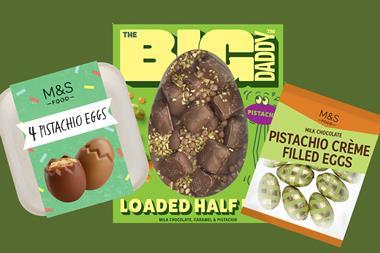There’s no sugaring this pill - the price of sweets is rising a lot faster than the price of chocolate.
While the retail price of chocs has kept in line with inflation - with SKUs up 3% year-on-year on average - the price of a typical sugar confectionery item has soared by 11% over the same period, from an average of 98p to £1.10 [BrandView 52w/e 3 June 2012].
And the increase in the price of sugar confectionery is accelerating - prices rose by 6.5% between June 2010 and June 2011, but just 3.3% in the 12 months preceding that. The growth in the cost of chocolate, meanwhile, has slowed from 5.8% in 2010-2011 to 3.4% over the past 12 months
Ingredients cost hikes have played a role in the rising price of sweets, including a sharp increase in the cost of sugar in early 2011, rises in maize starch and fluctuations in the price of gelatine. To a lesser extent, it is also a result of value being added to the market at Christmas, with the typical price paid for a sugar SKU up from £1.02 in December 2010 to £1.27 in December 2011.
The increase in price has come despite greater promotional activity, with the number of promotions on sugar confectionery up from 1,425 a year ago to 1,889 now. At the same time, the typical saving has risen 0.5 percentage points to 26%.
This has helped some major branded suppliers keep prices at the same level or even lower than last year, but the price of own-label sweets - already the most-promoted part of the sugar confectionery market - has soared by 17% year-on-year, from an average of 69p per unit to 83p. However, with the volume price of own-label goods virtually static year-on-year, the increase may also be a result of pack size changes and other product development.
In chocolate, too, own-label price rises are outpacing the overall market, rising 6% year-on-year from £1.45 a unit to £1.54. The major brands, meanwhile, have kept a tight rein on prices - the average unit price of Mars, Cadbury and Nestle SKUs have risen 4% year-on-year.
This will have been helped by chocolate producers having a slightly easier ride on the commodity front, with the price of some key chocolate ingredients, including cocoa, butter oil and milk products falling.
Nonetheless, there has been an increase in promotional activity in the chocolate market, with the number of deals up from 6,152 last year to 7,191, while the typical saving has risen from 26.9% to 29.1%
The average saving in the gum market, meanwhile, has fallen - from 27.1% to 24.3% - along with a drop in the number of promotions from 159 to 106. This is perhaps an indicator of renewed confidence in gum, which is back in value growth after a troubled few years.
Wholesales prices: eggs & dairy
After months of spectacular price rises in the wholesale egg markets, following the battery cage ban, EU prices are easing at last.
Although all egg products in our tracker remain significantly more expensive than they were a year ago - led by UK shell eggs, which are up by 145.8% year-on-year - all EU prices have fallen over the past four weeks. EU shell eggs for processing are now 16.2% cheaper than last month, while EU powdered egg yolk and liquid egg white are down 9% and 4.3%. Only UK shell eggs bucked the trend, with prices creeping up 2.6% in the past month to £1,695.4/tonne.
In dairy, price falls are the order of the day - all the dairy products in our tracker are showing year-on-year declines, with all but skimmed milk powder also falling month-on-month. UK butter remains dairy’s biggest faller and, at £1,975/tonne, is currently 45.5% cheaper than this time last year, having fallen by a further 10.7% over the past month.



















No comments yet